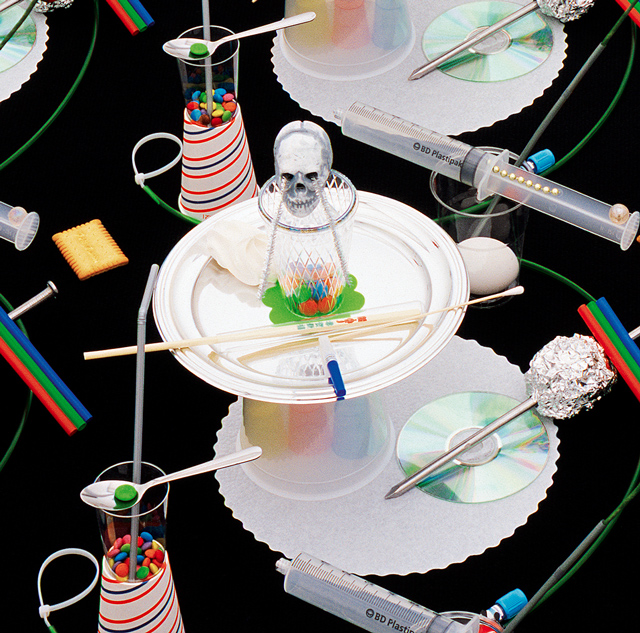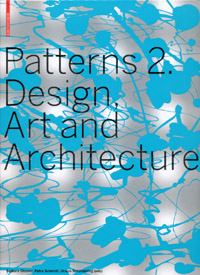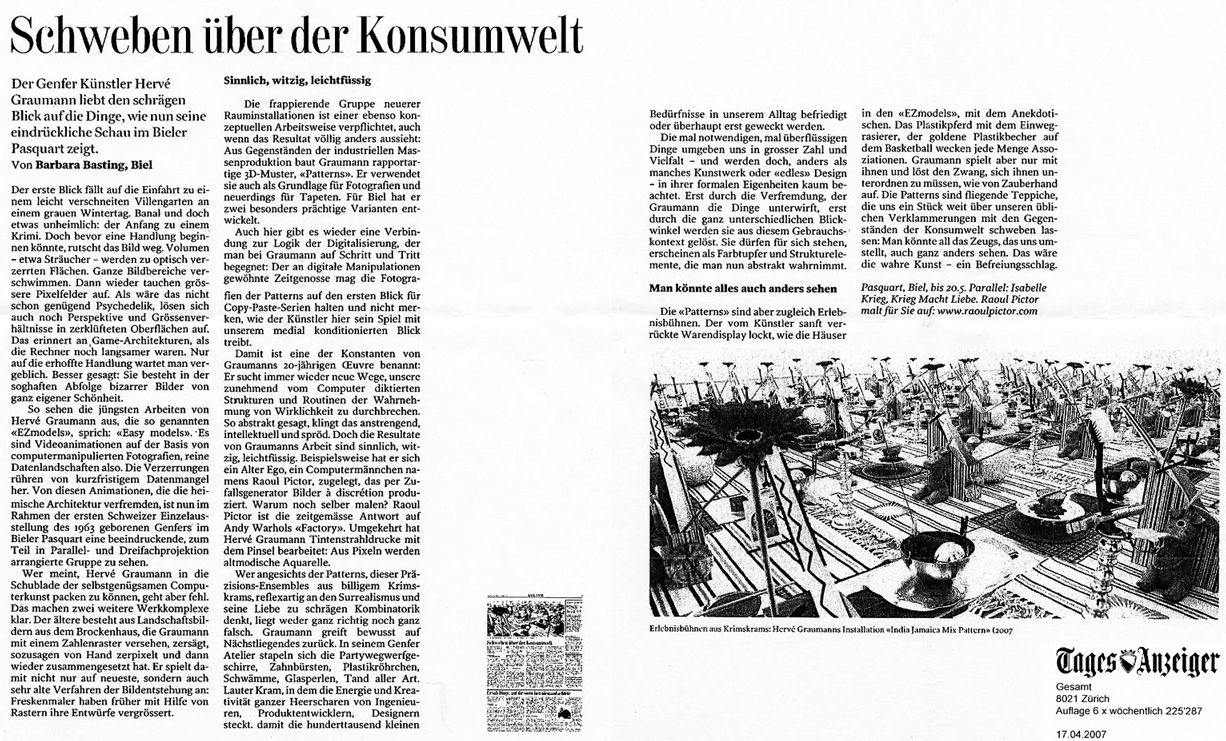excerpt / hans rudolf reust (deutsch)
 Ein Plastiktotenschädel, ein Becher, gefüllt mit grellbunten Pillen und eine CD-Rom auf einem Tortenboden – die „Skulpturen-Teppiche“ Graumanns bestehen aus banalen Alltagsgegenständen oder trivialen Kitschstücken aus Asienshops. Immergleich zusammengestellt und angeordnet bilden sie ein sich scheinbar unbegrenzt fortsetzendes Ornament. Allein durch die 80-fache perfekt ausgeführte Wiederholung desselben filigranen Moduls entsteht eine halluzinatorisch wirkende Bodenornamentik, die sich endlos zu vervielfachen und plastisch die Welt einzunehmen droht.
Ein Plastiktotenschädel, ein Becher, gefüllt mit grellbunten Pillen und eine CD-Rom auf einem Tortenboden – die „Skulpturen-Teppiche“ Graumanns bestehen aus banalen Alltagsgegenständen oder trivialen Kitschstücken aus Asienshops. Immergleich zusammengestellt und angeordnet bilden sie ein sich scheinbar unbegrenzt fortsetzendes Ornament. Allein durch die 80-fache perfekt ausgeführte Wiederholung desselben filigranen Moduls entsteht eine halluzinatorisch wirkende Bodenornamentik, die sich endlos zu vervielfachen und plastisch die Welt einzunehmen droht.
»Mit der Kraft einfacher Bilder erhellt Graumann die Komplexität einer von Hightech geprägten Wirklichkeit.«, schreibt der Kunstkritiker Hans Rudolf Reust. »Er bringt die Raster, die unsere Konstruktion von Wirklichkeit bestimmen, zum Spielen, um die ästhetische Wahrnehmung selbst aufs Spiel zu setzen.«
Hans Rudolf Reust

